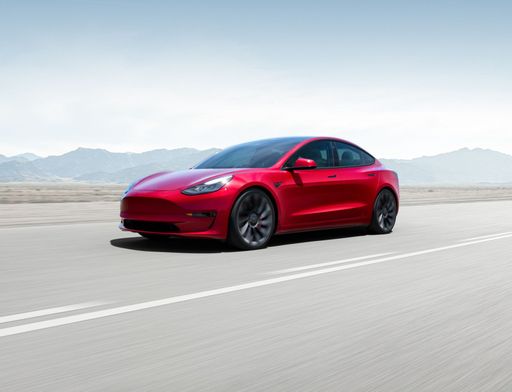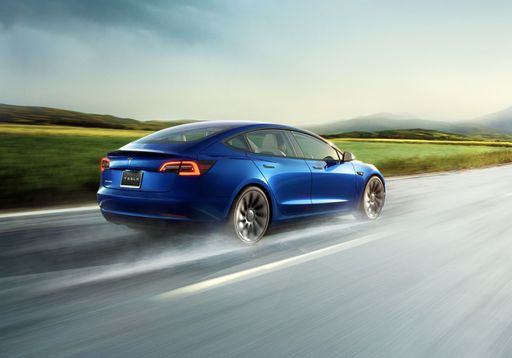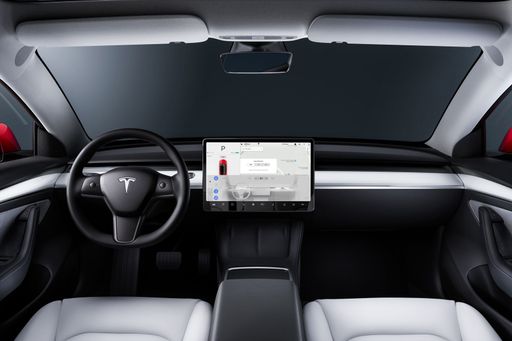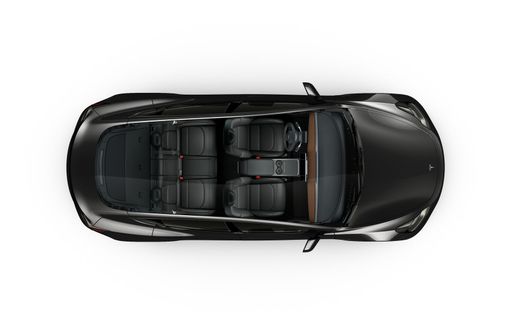Tesla Model 3 vs BYD Seal 6 - Differences and prices compared
Costs and Efficiency:
Price and efficiency are often the first things buyers look at. Here it becomes clear which model has the long-term edge – whether at the pump, the plug, or in purchase price.
Tesla Model 3 has a hardly perceptible advantage in terms of price – it starts at 34300 £, while the BYD Seal 6 costs 36800 £. That’s a price difference of around 2571 £.
As for range, the Tesla Model 3 performs decisively better – achieving up to 750 km, about 650 km more than the BYD Seal 6.
Engine and Performance:
Power, torque and acceleration are the classic benchmarks for car enthusiasts – and here, some clear differences start to show.
When it comes to engine power, the Tesla Model 3 has a clearly edge – offering 460 HP compared to 212 HP. That’s roughly 248 HP more horsepower.
In acceleration from 0 to 100 km/h, the Tesla Model 3 is convincingly quicker – completing the sprint in 3.10 s, while the BYD Seal 6 takes 8.50 s. That’s about 5.40 s faster.
In terms of top speed, the Tesla Model 3 performs distinct better – reaching 262 km/h, while the BYD Seal 6 tops out at 180 km/h. The difference is around 82 km/h.
Space and Everyday Use:
Cabin size, boot volume and payload all play a role in everyday practicality. Here, comfort and flexibility make the difference.
Seats: offers more seating capacity – vs .
In curb weight, BYD Seal 6 is slight lighter – 1710 kg compared to 1822 kg. The difference is around 112 kg.
In terms of boot space, the Tesla Model 3 offers to a small extent more room – 594 L compared to 500 L. That’s a difference of about 94 L.
When it comes to payload, BYD Seal 6 noticeable takes the win – 435 kg compared to 333 kg. That’s a difference of about 102 kg.
Who wins the race?
The Tesla Model 3 proves to be is largely superior and therefore becomes our DriveDuel Champion!
Tesla Model 3 is the better all-rounder in this comparison.
 @ Tesla, Inc.
@ Tesla, Inc.
Tesla Model 3
Costs and Consumption
View detailed analysis
Engine and Performance
View detailed analysis
Dimensions and Body
View detailed analysis
Tesla Model 3
The Tesla Model 3 slices through daily commuting with a silent, confident shove that makes petrolheads reassess their life choices, while its minimalist cabin feels more like a slick gadget gallery than a traditional car interior. For buyers after a fuss-free, tech-forward electric with plenty of grin factor and low running drama, it’s hard to beat—just don't be surprised when the car updates itself overnight.
details @ Tesla, Inc.
@ Tesla, Inc.
 @ Tesla, Inc.
@ Tesla, Inc.
 @ Tesla, Inc.
@ Tesla, Inc.
 @ Tesla, Inc.
@ Tesla, Inc.
BYD Seal 6
The BYD Seal 6 is a captivating electric sedan that captures attention with its sleek design and modern aerodynamics. With a strong focus on sustainability, it offers an impressive electric driving experience, combining efficiency with cutting-edge technology. The Seal 6 stands out in the EV market for its luxurious interior and innovative features, making it a strong contender for drivers looking to embrace the future of transportation.
details
 @ Tesla, Inc.
@ Tesla, Inc.
|
|
|
|
|
Costs and Consumption |
|
|---|---|
|
Price
34300 - 50100 £
|
Price
36800 - 42800 £
|
|
Consumption L/100km
-
|
Consumption L/100km
1.7 - 2.6 L
|
|
Consumption kWh/100km
13.2 - 16.7 kWh
|
Consumption kWh/100km
-
|
|
Electric Range
550 - 750 km
|
Electric Range
50 - 100 km
|
|
Battery Capacity
64.5 - 83 kWh
|
Battery Capacity
-
|
|
co2
0 g/km
|
co2
38 - 60 g/km
|
|
Fuel tank capacity
-
|
Fuel tank capacity
65 L
|
Dimensions and Body |
|
|---|---|
|
Body Type
Sedan
|
Body Type
Estate
|
|
Seats
5
|
Seats
5
|
|
Doors
4
|
Doors
5
|
|
Curb weight
1822 - 1929 kg
|
Curb weight
1710 - 1805 kg
|
|
Trunk capacity
594 L
|
Trunk capacity
500 L
|
|
Length
4720 - 4724 mm
|
Length
4840 mm
|
|
Width
1850 mm
|
Width
1875 mm
|
|
Height
1431 - 1440 mm
|
Height
1505 mm
|
|
Max trunk capacity
-
|
Max trunk capacity
1535 L
|
|
Payload
303 - 333 kg
|
Payload
435 kg
|
Engine and Performance |
|
|---|---|
|
Engine Type
Electric
|
Engine Type
Plugin Hybrid
|
|
Transmission
Automatic
|
Transmission
Automatic
|
|
Transmission Detail
Reduction Gearbox
|
Transmission Detail
CVT
|
|
Drive Type
Rear-Wheel Drive, All-Wheel Drive
|
Drive Type
Front-Wheel Drive
|
|
Power HP
283 - 460 HP
|
Power HP
184 - 212 HP
|
|
Acceleration 0-100km/h
3.1 - 6.1 s
|
Acceleration 0-100km/h
8.5 - 8.9 s
|
|
Max Speed
201 - 262 km/h
|
Max Speed
180 km/h
|
|
Torque
420 - 660 Nm
|
Torque
-
|
|
Number of Cylinders
-
|
Number of Cylinders
4
|
|
Power kW
208 - 338 kW
|
Power kW
135 - 156 kW
|
|
Engine capacity
-
|
Engine capacity
1498 cm3
|
General |
|
|---|---|
|
Model Year
2025
|
Model Year
2025
|
|
CO2 Efficiency Class
A
|
CO2 Efficiency Class
B
|
|
Brand
Tesla
|
Brand
BYD
|
Is the Tesla Model 3 offered with different drivetrains?
Available configurations include Rear-Wheel Drive or All-Wheel Drive.
The prices and data displayed are estimates based on German list prices and may vary by country. This information is not legally binding.
